Unveiling the Secrets of Mangdang Mountain: History, Culture, and Adventure

An Essential Guide to Visiting Mangdang Mountain
In This Guide
- An Essential Guide to Visiting Mangdang Mountain
- The Rich History and Legends of Mangdang Mountain
- Main Highlights: What You Absolutely Can’t Miss
- Planning Your Visit: A Practical Guide
- Tickets: Prices, Booking, and Tips
- How to Get There: A Complete Transportation Guide
- Local Cuisine and Accommodation Nearby
- Frequently Asked Questions
- Final Thoughts on Your Trip
Nestled in the heart of Henan Province, Mangdang Mountain (芒砀山) stands as a remarkable testament to China’s rich tapestry of history, culture, and natural beauty. This enchanting destination not only offers breathtaking landscapes but also serves as a poignant reminder of the pivotal events that helped shape the nation.
As you traverse the verdant slopes of Mangdang Mountain, you’ll uncover stories steeped in the legacy of the Han Dynasty and the rebellions that marked China’s transition from the Qin Dynasty. It was here that Emperor Gaozu of Han famously declared his rebellion, igniting a series of uprisings that would eventually lead to the establishment of one of China’s most illustrious dynasties. The area is also home to the mausoleums of the Kings of Liang, where archaeological treasures such as ancient murals and tombs await discovery.
What to Expect

Mangdang Mountain.
Visitors to Mangdang Mountain can anticipate a blend of historical exploration and natural wonder. The area is characterized by its:
- Stunning Scenery: With over 117 square kilometers of lush landscapes, the mountain is dotted with unique rock formations, cascading waterfalls, and serene lakes, making it a perfect backdrop for nature lovers and photographers alike.
- Rich Cultural Heritage: The mountain is not just a feast for the eyes; it also offers deep cultural insights through its historical sites, including temples and ancient roads that beckon you to walk in the footsteps of emperors and rebels.
- Exquisite Flora and Fauna: The region boasts a diverse ecosystem, featuring unique plant species like the ancient yew tree, known for its mystical properties.
The best time to visit Mangdang Mountain is during the summer months when the weather is pleasantly cool, and the lush greenery is at its most vibrant. Whether you’re a history buff, a nature enthusiast, or simply seeking a getaway from the urban hustle, Mangdang Mountain promises an unforgettable experience steeped in the essence of China’s past and present.
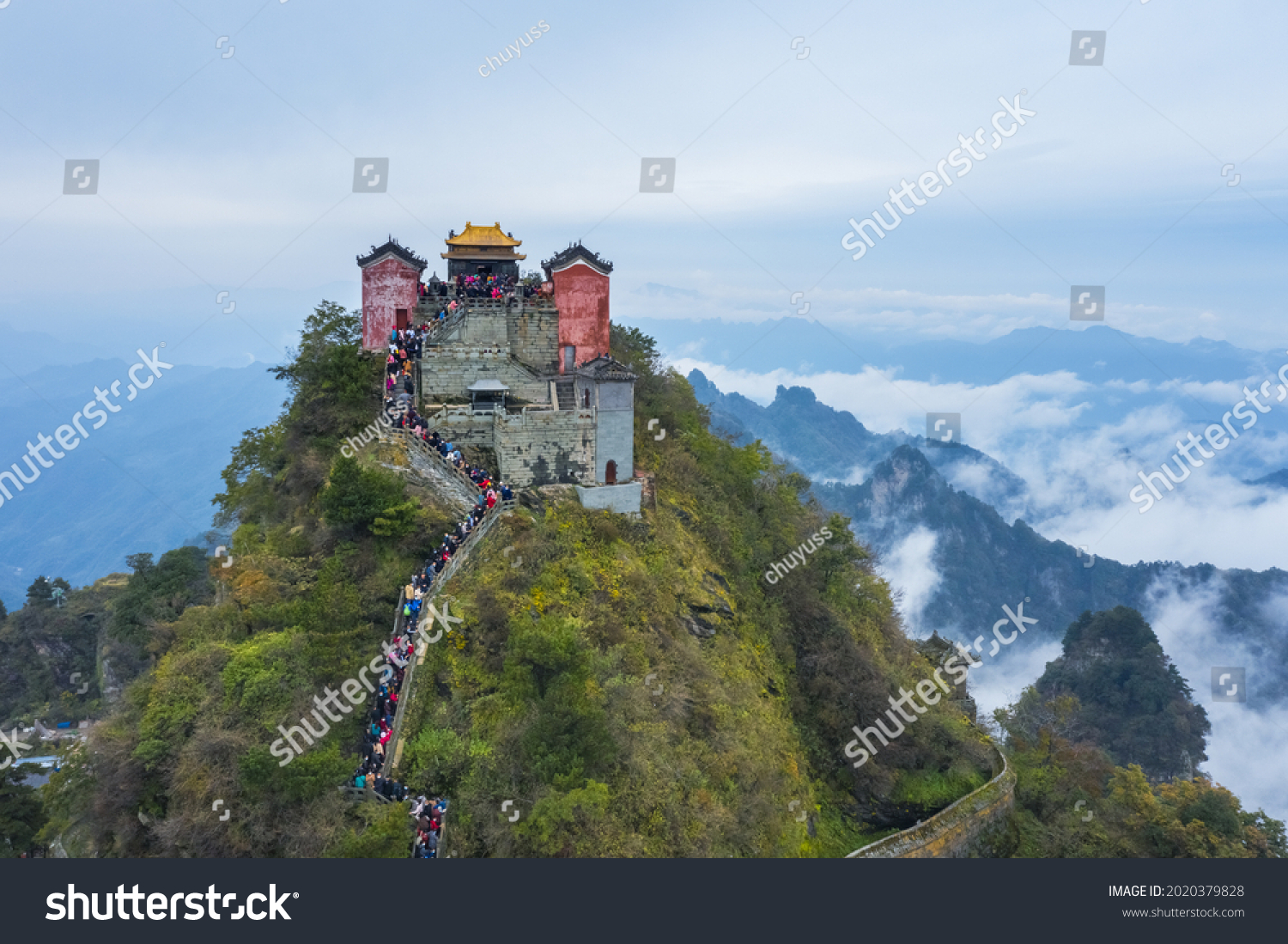
Mangdang Mountain.
Prepare for an adventure that bridges time and nature, inviting you to explore the majestic heights and hidden depths of this extraordinary mountain.
The Rich History and Legends of Mangdang Mountain
Nestled in the heart of Henan Province, Mangdang Mountain (芒砀山) is more than just a stunning natural landscape; it is a site steeped in rich history and captivating legends. This iconic hill, rising 156.8 meters, has been a silent witness to pivotal moments that shaped Chinese history, serving as a backdrop to tales of rebellion, power, and cultural heritage.
The Birthplace of Rebellion
Mangdang Mountain is famously known as the launch site for the rebellion against the oppressive Qin Dynasty by Emperor Gaozu of Han (Liu Bang) in 210 BC. This event, often referred to as the “Slaying of the White Serpent,” marked a significant turning point in Chinese history. The mountain served as a rallying point for those disillusioned with the Qin rule, leading to the eventual establishment of the Han Dynasty, one of China’s golden ages.

Mangdang Mountain.
In addition to Gaozu, the area is also associated with Chen Sheng, the leader of the first rebellion against the Qin. His burial site lies near the mountain, further enhancing its historical significance. The enduring legacy of these figures is commemorated by a shrine built during the reign of Emperor Wen of Han, though it has undergone several reconstructions throughout the centuries.
Legends of the Liang Kings
The ancient kings of the Liang Kingdom left an indelible mark on Mangdang Mountain, particularly through their elaborate tombs. The mausoleums of these kings can be found scattered across the landscape, with the tomb of King Xiao of Liang being one of the most significant. These burial sites are not merely resting places; they are repositories of exquisite art and history, including the renowned mural Sishen Yunqi Tu, a national treasure that showcases the artistry of the era.
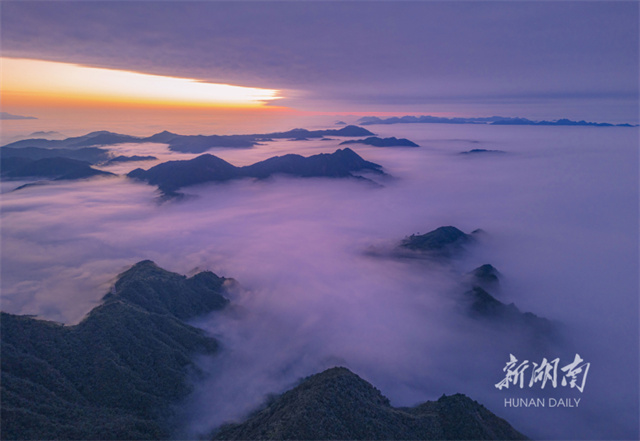
Mangdang Mountain.
During the tumultuous Three Kingdoms period, the infamous warlord Cao Cao plundered these tombs, significantly enriching himself and his soldiers. This act of desecration added a layer of complexity to the mountain’s narrative, blending valor with betrayal.
A Site of Struggle and Resilience
Throughout its tumultuous history, Mangdang Mountain has been the stage for various uprisings and battles. Notably, it witnessed numerous struggles during the Taiping Heavenly Kingdom movement and the peasant uprisings led by figures such as Li Zicheng. The mountain stands as a testament to the resilience of those who fought against tyranny and oppression in their quest for justice and peace.
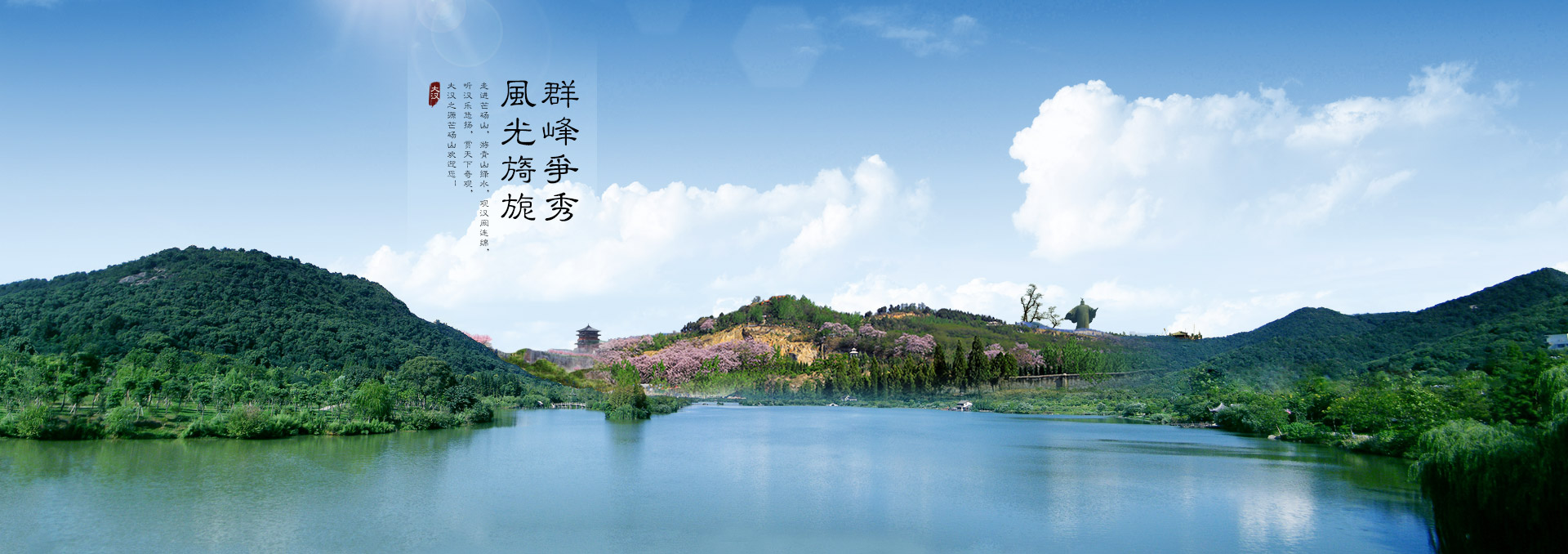
Mangdang Mountain.
In more recent history, during the Sino-Japanese War, it was the site of fierce combat where General Lu Yuting of the Kuomintang lost his life, further embedding Mangdang Mountain in the annals of modern Chinese history.
Natural Beauty Meets Cultural Heritage
While the history of Mangdang Mountain is rich and varied, its natural beauty is equally captivating. The area is adorned with thousands of unique rock formations, lush forests, and serene waterfalls. Visitors can explore the ancient Fujian-Jiangxi road, a stone-paved path that offers a glimpse into the past and serves as a perfect backdrop for forest bathing—a popular activity that promotes relaxation and connection with nature.
Conclusion
Mangdang Mountain is not just a geographical landmark; it is a symbol of the struggles, triumphs, and cultural heritage that define Chinese history. From the legendary tales of emperors and kings to its breathtaking landscapes, a visit to this mountain promises an enriching experience that combines history with natural splendor, making it an essential destination for anyone seeking to understand the complexities and beauty of China’s past.
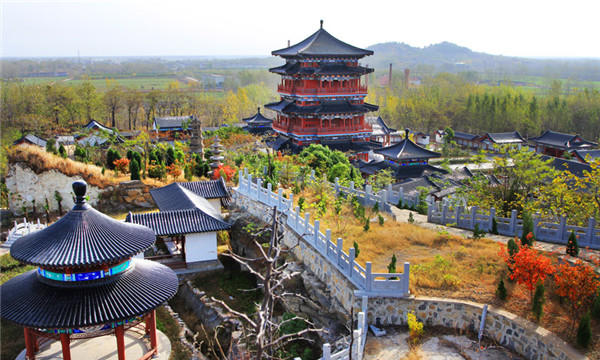
Mangdang Mountain.
Main Highlights: What You Absolutely Can’t Miss
Discover the Wonders of Mangdang Mountain
Nestled in the heart of Yongcheng, Henan province, Mangdang Mountain (芒砀山) is steeped in rich history and natural beauty, making it an essential destination for international travelers eager to explore China’s cultural heritage. From ancient sites to stunning landscapes, here are the highlights you absolutely cannot miss.
1. The Historic Significance of Mount Mangdang
The tale of Mangdang Mountain is intertwined with the birth of the Han Dynasty. It was here that Emperor Gaozu of Han famously declared his rebellion against the Qin dynasty in 210 BC, an event known as the “Slaying of the White Serpent.” The mountain is also the burial site of Chen Sheng, the leader of the first rebellion against the Qin. A shrine dedicated to Emperor Gaozu, dating back to the Qing dynasty, stands as a testament to the site’s historical importance. Exploring this area allows visitors to walk through the pages of Chinese history.
2. The Liang Tombs
As you ascend the mountain, keep an eye out for the Mausoleums of the Han Dynasty Kings of Liang. These tombs, particularly that of King Xiao, offer a fascinating glimpse into ancient royal life. The stunning murals, like the Sishen Yunqi Tu found in King Gong’s mausoleum, are considered national treasures and showcase exquisite artistry from the era.
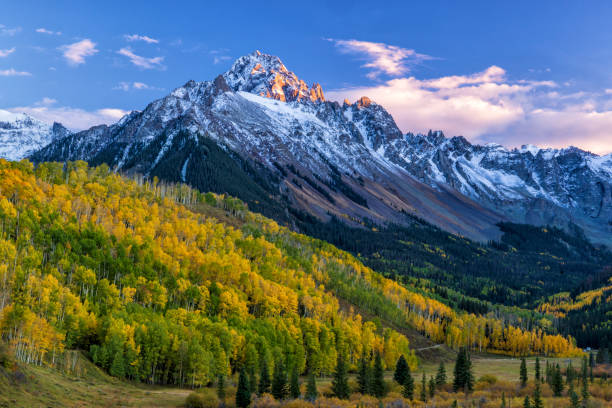
Mangdang Mountain.
3. Scenic Spots and Natural Beauty
Mangdang Mountain is not just a historical site; its breathtaking scenery makes it a perfect summer retreat. Visitors can explore various natural attractions:
- Baizhang Waterfall: A picturesque waterfall that tumbles down the cliffs, providing a serene backdrop for relaxation and photography.
- Tianhu Lake: A tranquil lake surrounded by lush greenery, ideal for peaceful walks and picnics.
- Ruilong Bridge: A charming bridge that offers stunning views of the surrounding landscapes.
- Qingyu Tree: This ancient tree is noted for its unique characteristics, and the area around it is perfect for a leisurely stroll amidst nature.
4. The Enigmatic Rainy Tree
One of the most captivating natural wonders at Mangdang Mountain is the Rainy Tree located in Baozhu Village. Standing at 17 meters tall, this ancient yew tree creates a unique phenomenon: during the scorching summer months, droplets of water fall from its branches, providing a refreshing “rain” that can mesmerize visitors. This natural marvel is a must-see and often leaves travelers in awe.
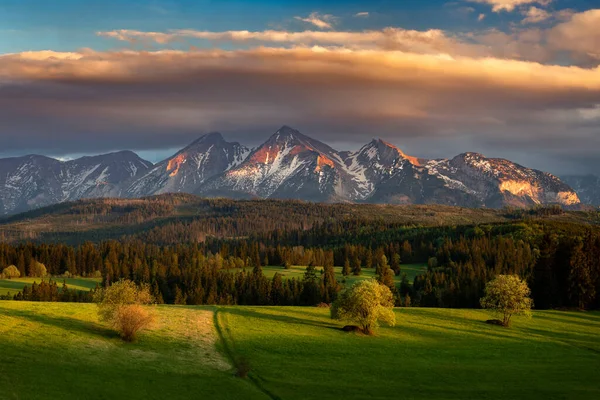
Mangdang Mountain.
5. The Ancient Fujian-Jiangxi Road
For history enthusiasts, the ancient stone-paved Fujian-Jiangxi road known as “Three Thousand Eight Hundreds” is an extraordinary path that stretches for about 5 kilometers. Walking this path offers a unique opportunity to connect with the past, surrounded by the thick forests and tranquil ambiance of the mountain.
6. Forest Bathing and Scenic Trails
The Shili Gallery, a scenic trail located on the west side of the mountain, is perfect for those looking to immerse themselves in nature. Here, various rock formations, rushing springs, and waterfalls create a picturesque environment ideal for forest bathing.
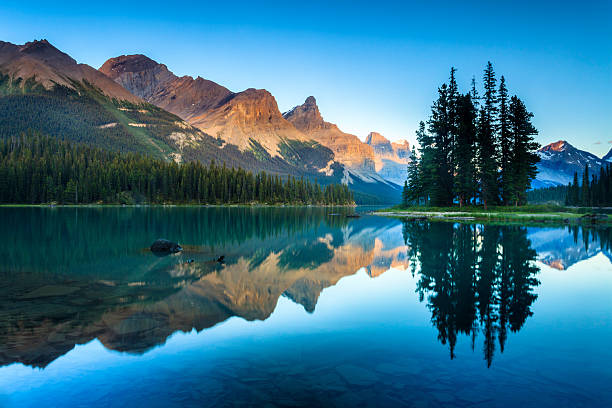
Mangdang Mountain.
7. Plan Your Visit
Mangdang Mountain is open year-round, allowing visitors the flexibility to explore its beauty at any time. The recommended sightseeing time is 1-2 days to fully appreciate the historical sites and natural wonders.
Final Thoughts
Mangdang Mountain is more than just a beautiful destination; it is a journey through time and nature. Whether you’re tracing the steps of ancient emperors, marveling at exquisite art, or enjoying the serene landscapes, this mountain has something to offer everyone. Make sure to add it to your travel itinerary and experience the magic of this historical gem in China.
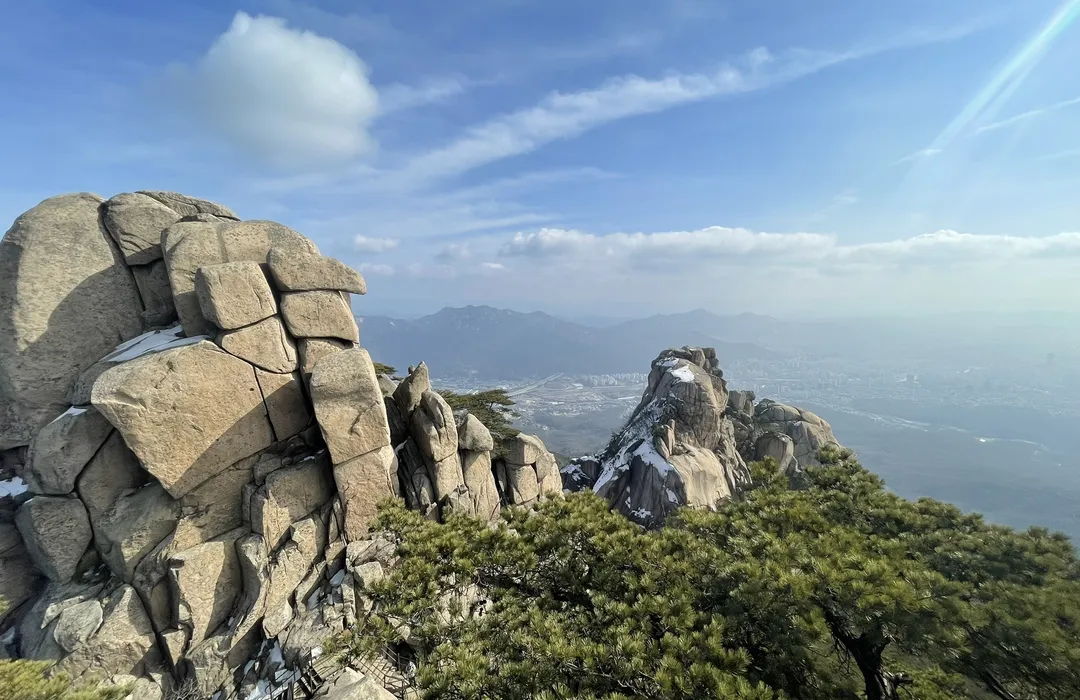
Mangdang Mountain.
Planning Your Visit: A Practical Guide
Your Essential Guide to Visiting Mangdang Mountain
When planning your journey to Mangdang Mountain (芒砀山), a site steeped in history and natural beauty, you will find a range of attractions and practical considerations to enhance your experience. Nestled in Yongcheng, Henan Province, this area is not only a stunning natural reserve but also a significant historical landmark. Here’s how to make the most of your visit.
Best Time to Visit
Mangdang Mountain can be enjoyed year-round, but for the most pleasant weather, consider visiting during spring (April to June) or autumn (September to November). These seasons offer mild temperatures and vibrant foliage, ideal for hiking and exploration.
Getting There
- By Air: The nearest major airport is Zhengzhou Xinzheng International Airport. From there, you can take a train or bus to Yongcheng.
- By Train: Yongcheng Train Station is well-connected with major cities. High-speed trains from Zhengzhou take approximately 1.5 hours.
- By Car: If you prefer driving, Mangdang Mountain is accessible via National Highways 220 and 105.
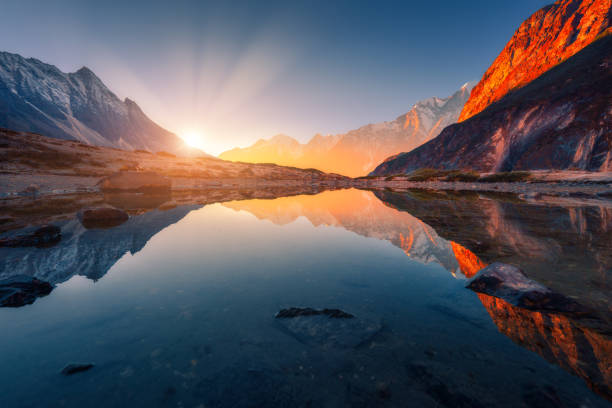
Mangdang Mountain.
Entry Fees and Hours
- Admission: Entry to Mangdang Mountain is free, allowing you to fully immerse yourself in the beauty and history without financial barriers.
- Operating Hours: While the mountain is open year-round, the best times for visiting the scenic spots are from 7:30 AM to 5:00 PM. Plan your day accordingly to ensure you can explore before sunset.
Must-See Attractions
Mangdang Mountain boasts a wealth of natural wonders and historical sites. Here are some highlights not to miss:
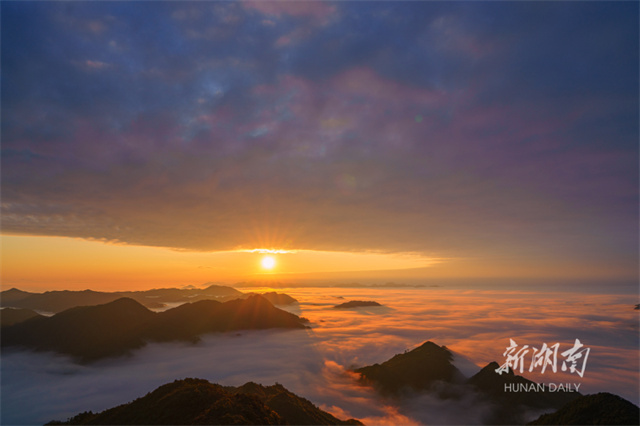
Mangdang Mountain.
-
The Liang Tombs: Explore the ancient mausoleums of Han Dynasty kings, which offer a glimpse into the region’s royal past.
-
The Shrine of Emperor Gaozu: Visit the shrine where the future Emperor Gaozu began his rebellion against the Qin Dynasty, a pivotal moment in Chinese history.
-
Baizhang Waterfall: Enjoy the refreshing cascades of this waterfall, which is a favorite among visitors for its scenic beauty.
-
Tianhu Lake: Perfect for a tranquil afternoon stroll, this lake is surrounded by lush greenery and provides stunning views.
-
Exotic Flora: Be sure to see the “rainy tree” in Baozhu Village, a remarkable yew tree known for its unique drizzling phenomenon during hot summer days.
-
Historical Pathways: Walk along the ancient Fujian-Jiangxi road, known as “Three Thousand Eight Hundreds,” a 5-kilometer stone-paved route ideal for forest bathing and soaking in nature.
Accommodation Options
While there are limited accommodations directly at Mangdang Mountain, various options are available in Yongcheng:
- Hotels: From budget inns to mid-range hotels, you’ll find comfortable options to suit your needs.
- Local Guesthouses: For a more authentic experience, consider staying in a local guesthouse, which often provides meals and insights into regional culture.
Dining Recommendations
After a day of exploration, refuel at one of the nearby restaurants. Here are some local favorites:
- De Zhuang Hotpot: Savor the flavors of a traditional Chinese hotpot meal.
- Lao Sai XingDong Café: Enjoy a casual setting with a variety of snacks and beverages.
- YuanQuan Restaurant: Indulge in authentic Chinese cuisine, perfect for a hearty dinner after a day of hiking.
Tips for a Memorable Visit
- Prepare for Hiking: Wear comfortable shoes and bring plenty of water as you explore the extensive trails.
- Cultural Respect: Familiarize yourself with local customs and the historical significance of the sites you will visit.
- Photography: Don’t forget your camera! Mangdang Mountain offers breathtaking landscapes and historical landmarks perfect for capturing memories.
Conclusion
A visit to Mangdang Mountain is not just a journey through stunning landscapes; it is an exploration of China’s rich history and culture. With its breathtaking scenery, significant historical sites, and welcoming atmosphere, Mangdang Mountain promises an unforgettable experience for every traveler. Plan your visit today, and immerse yourself in the beauty and history of this remarkable destination!
Tickets: Prices, Booking, and Tips
Discovering Mangdang Mountain: Tickets, Booking, and Tips
Mangdang Mountain, an enchanting destination steeped in history and natural beauty, welcomes visitors year-round. This scenic area, located in Yongcheng, Henan Province, is renowned for its historical significance as the site where Emperor Gaozu of Han ignited his rebellion against the Qin dynasty. To make the most of your visit, understanding the ticketing options and practical tips is essential.
Ticket Information
- Entry Fee: Admission to Mangdang Mountain is free, allowing travelers to explore its breathtaking landscapes and historical sites without any financial barriers.
- Opening Hours: The scenic area is open 24/7, providing flexibility for visitors to plan their excursions at their convenience. However, for those looking to engage with local guides or partake in organized tours, it is advisable to visit during daylight hours.
Booking Tips
- Advance Planning: While no entrance fee is required, it is wise to plan your visit in advance, particularly during peak tourist seasons (spring and autumn) when the weather is most pleasant. This ensures you can fully enjoy the numerous attractions and avoid potential crowds.
- Guided Tours: Consider booking a guided tour if you wish to delve deeper into the rich history of the area. Many local operators offer tours that include transportation, historical insights, and visits to key sites such as the mausoleums of the Liang dynasty kings and the iconic shrine of Emperor Gaozu.
- Local Accommodations: If you plan to explore extensively, consider staying at nearby hotels or guesthouses. It’s recommended to reserve accommodations ahead of time, especially during holidays or festivals.
Visitor Recommendations
- Recommended Duration: Allocate 1-2 days to fully appreciate the myriad attractions, including the stunning Baizhang Waterfall and the ancient stone-paved Fujian-Jiangxi road.
- Best Times to Visit: Early mornings or late afternoons are ideal for experiencing the serene beauty of Mangdang Mountain while avoiding the midday heat, particularly in the summer months.
- What to Bring: Comfortable walking shoes, a hat for sun protection, and a camera to capture the stunning landscapes are essential. Don’t forget to carry water and snacks, as options may be limited once you are on the mountain.
Nearby Attractions
After exploring Mangdang Mountain, consider visiting other nearby sites to enrich your experience:
– Nanping Jiufeng Mountain: Just a short distance away, this area offers more hiking opportunities and scenic views.
– Nanping City Museum: Perfect for diving deeper into the local history and culture.
Mangdang Mountain not only serves as a beautiful getaway but also as a portal to the profound historical narratives that shaped China. With free entry and accessible booking tips, your journey to this remarkable site promises to be both enriching and memorable. Happy travels!
How to Get There: A Complete Transportation Guide
Getting to Mangdang Mountain: A Complete Transportation Guide
Nestled in the heart of Yongcheng, Henan province, Mangdang Mountain (芒砀山) is not only a natural wonder but also a significant historical site. Whether you’re drawn by its lush landscapes, rich history, or both, reaching this remarkable destination is relatively straightforward. Here’s how to navigate your way there, whether you prefer to travel by air, train, or road.
By Air
The nearest major airport to Mangdang Mountain is Zhengzhou Xinzheng International Airport (CGO), approximately 400 kilometers away. This airport serves several domestic and international flights, making it a convenient entry point into Henan province.
Steps:
1. Fly to Zhengzhou: Choose from multiple airlines offering flights to Zhengzhou from major cities like Beijing, Shanghai, or Guangzhou.
2. Travel to Yongcheng: After landing in Zhengzhou, you have several options to reach Yongcheng:
– Train: Take a high-speed train from Zhengzhou East Railway Station to Yongcheng. The journey takes around 2.5 hours.
– Bus: Alternatively, you can take a long-distance bus from Zhengzhou, but this may take up to 5 hours.
By Train
If you are already in China, traveling by train can be an enjoyable and scenic experience. The Yongcheng Railway Station is well-connected to various cities, making it easy to plan your trip.
Steps:
1. Book a Train Ticket: Check for available trains to Yongcheng from cities like Zhengzhou, Xuzhou, or Jinan.
2. Arrival at Yongcheng: Once you arrive at Yongcheng Railway Station, you can take a taxi or local bus to Mangdang Mountain, which is about a 30-minute drive away.
By Bus
For travelers already in the Henan region, buses offer a reliable mode of transportation to Yongcheng.
Steps:
1. Depart from Local Cities: Look for bus services operating from nearby cities such as Xuchang or Kaifeng to Yongcheng.
2. Reach Yongcheng: Buses typically run throughout the day and can be a cost-effective option.
Local Transportation to Mangdang Mountain
Upon reaching Yongcheng, getting to Mangdang Mountain is straightforward.
- Taxi Services: Taxis are readily available outside the railway station and major bus terminals. A taxi ride to the mountain takes about 30 minutes.
- Public Transportation: Local buses may also operate routes toward Mangdang Mountain, offering an economical way to travel. Check local schedules for updated routes.
Best Time to Visit
While Mangdang Mountain can be visited year-round, spring (April to June) and autumn (September to November) are particularly pleasant, with mild temperatures and vibrant scenery. Summers can be hot, but the mountain’s altitude offers a refreshing escape from the heat.
Tips for Travelers
- Language: English is not widely spoken in the region, so having a translation app or a phrasebook can be helpful.
- Cash: While larger establishments may accept credit cards, smaller shops and eateries often prefer cash. Ensure you have some Chinese Yuan (CNY) on hand.
- Local Cuisine: Don’t miss the chance to try local Henan dishes at nearby restaurants, enhancing your cultural experience while visiting the mountain.
With this guide, you’re well-equipped to embark on an adventure to Mangdang Mountain, where history and nature merge to create an unforgettable experience. Happy travels!
Local Cuisine and Accommodation Nearby
Exploring the captivating landscapes of Mangdang Mountain is an adventure that deserves to be complemented with delightful local cuisine and comfortable accommodations. Nestled in the historic region of Yongcheng, Henan, this area offers a rich tapestry of flavors and hospitality that will enhance your visit to this significant cultural landmark.
Culinary Delights
Local Specialties
When visiting Mangdang Mountain, be sure to indulge in the following local dishes that reflect the unique flavors of Henan cuisine:
-
Stewed Noodles (炸酱面): A hearty dish featuring handmade wheat noodles topped with a savory sauce made from fermented soybean paste, minced pork, and fresh vegetables. It’s a comforting meal, perfect after a day of exploration.
-
Spicy Hot Pot (火锅): A regional favorite, hot pot is a communal dining experience where you can cook a variety of meats, vegetables, and noodles in a bubbling broth. Look for local variations that incorporate local spices and fresh ingredients.
-
Baozi (包子): These steamed buns are filled with a variety of ingredients, from pork to vegetables. They make for an excellent snack while trekking through the scenic areas.
-
Mango Sticky Rice (芒果糯米饭): A sweet treat that combines glutinous rice with fresh mango and coconut milk. This dessert is a refreshing end to any meal, especially during the summer months.
Recommended Eateries
While there are several eateries close to Mangdang Mountain, here are a few that stand out for their local charm and delicious offerings:
- YuanQuan Restaurant
- Cuisine: Traditional Chinese
- Distance: Approximately 3.7 kilometers from Mangdang Mountain
-
Highlights: Known for its authentic Henan dishes and local ambiance.
-
De Zhuang Hotpot
- Cuisine: Hot Pot
- Distance: About 1.5 kilometers away
-
Highlights: Perfect for those looking to enjoy a communal dining experience with fresh ingredients.
-
Han ZhiWei Korean Restaurant
- Cuisine: Korean Barbecue
- Distance: 1.8 kilometers from the mountain
- Highlights: Offers a different twist with Korean barbecue options for those looking to mix flavors.
Places to Stay
After a day of hiking and cultural immersion, a restful night’s sleep is essential. The following accommodations provide comfort and convenience, ensuring you’re well-rested for your adventures.
- Nanping Hotel
- Type: Mid-range hotel
- Distance: 10 kilometers from Mangdang Mountain
-
Features: Offers modern amenities, complimentary breakfast, and easy access to local attractions.
-
Yongcheng International Hotel
- Type: Luxury accommodation
- Distance: About 8 kilometers away
-
Features: Provides upscale amenities, including a spa, fitness center, and fine dining, making it ideal for travelers seeking a more luxurious experience.
-
Zhuang Handmade Bun Inn
- Type: Budget-friendly guesthouse
- Distance: Approximately 2.6 kilometers from the mountain
- Features: A cozy option for budget travelers, known for its homemade breakfast and friendly service.
Conclusion
The Mangdang Mountain area offers not just breathtaking scenery and historical significance but also a delightful culinary landscape and comfortable places to rest. Embrace the flavors of Henan and find accommodation that suits your travel style as you explore this remarkable region steeped in history. Whether you’re feasting on local specialties or enjoying a peaceful night’s stay, your experience at Mangdang Mountain will be truly memorable.
Frequently Asked Questions
Frequently Asked Questions about Mangdang Mountain
1. What is Mangdang Mountain known for?
Mangdang Mountain, located in Yongcheng, Henan Province, is historically significant as the site where Emperor Gaozu of Han initiated his rebellion against the Qin Dynasty. It is also renowned for its stunning natural beauty, featuring thousands of peaks, unique rock formations, and diverse flora, making it a popular destination for nature lovers and history enthusiasts alike.
2. What are the main attractions in the Mangdang Mountain area?
Visitors can explore a variety of attractions, including:
– Liang Tombs: The mausoleums of the Han dynasty Kings of Liang.
– Baizhang Waterfall: A picturesque waterfall ideal for photography.
– Tianhu Lake: A serene lake perfect for relaxation.
– Ruilong Bridge: A scenic bridge offering stunning views.
– Immortal Stacking Rocks: A fascinating rock formation that captivates many visitors.
3. When is the best time to visit Mangdang Mountain?
The ideal time to visit Mangdang Mountain is during the spring (April to June) and autumn (September to November) when the weather is mild and the scenery is particularly beautiful. Summers can be hot, but the mountain’s elevation provides a refreshing escape from the heat.
4. Are there any entrance fees for Mangdang Mountain?
Entry to Mangdang Mountain is free, allowing visitors to enjoy the natural beauty and historical significance without any cost. However, certain attractions within the park may have their own fees.
5. What are the opening hours for Mangdang Mountain?
Mangdang Mountain is open year-round, allowing for flexible travel plans. Specific attractions may have varying hours, but generally, the main areas are accessible 24/7.
6. How long should I plan to spend at Mangdang Mountain?
A suggested visit duration is 1-2 days. This allows ample time to hike the scenic trails, explore the historical sites, and fully appreciate the natural environment.
7. What kind of activities can I do at Mangdang Mountain?
Visitors can engage in a variety of activities, including:
– Hiking: Numerous trails cater to all levels of hikers.
– Photography: Capture stunning landscapes and unique rock formations.
– Cultural Exploration: Learn about the rich history and legends associated with the area.
– Forest Bathing: Enjoy the therapeutic benefits of nature by immersing yourself in the tranquil forest surroundings.
8. Are there any accommodations near Mangdang Mountain?
Yes, there are various hotels and guesthouses in the nearby Yongcheng area, ranging from budget to mid-range options. It’s advisable to book in advance, especially during peak travel seasons, to ensure availability.
Explore the enchanting beauty and rich history of Mangdang Mountain, where nature and culture intertwine seamlessly!
Final Thoughts on Your Trip
As you conclude your journey to Mangdang Mountain, take a moment to reflect on the rich tapestry of history and natural beauty that this remarkable destination offers. Nestled in the heart of Henan Province, Mangdang Mountain is not just a geographical landmark; it is a site steeped in the stories of ancient rebellions, imperial ambitions, and the relentless march of time.
A Journey Through Time and Nature
During your exploration, you likely encountered the echoes of the past, from the legendary tales of Emperor Gaozu and the uprisings against the Qin dynasty to the serene landscapes that have inspired generations. Here are a few highlights to remember:
- Historical Significance: The mountain served as a backdrop for pivotal events in Chinese history, including the first rebellion against the Qin dynasty and the powerful legacy of the Han dynasty.
- Breathtaking Scenery: With its diverse ecosystems, lush forests, and unique rock formations, Mangdang Mountain is a paradise for nature enthusiasts and those seeking tranquility away from the bustle of urban life.
- Cultural Richness: The ancient roads, shrines, and tombs scattered throughout the area invite travelers to delve deeper into the cultural narratives that have shaped this region.
Final Reflections
Before you depart, consider how the stories and sights you’ve experienced will resonate with you long after you leave. Whether it was the gentle drizzle beneath the famed ancient yew tree or the panoramic views from the mountain’s peaks, Mangdang Mountain offers a unique blend of history and nature that is sure to leave an indelible mark on your heart.
As you return to your everyday life, carry with you the spirit of adventure and a newfound appreciation for the intricate history and culture of China. Whether you are an avid traveler or a curious historian, Mangdang Mountain is a destination that promises to enrich your journey and inspire your wanderlust for years to come.
Safe travels, and may your adventures continue to unfold beautifully!